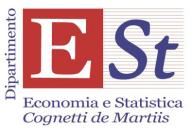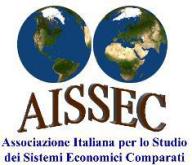By Sara Caria[*]
A focus of vulnerability for the Covid-19 pandemic
Latin America has turned into an important focus of the Covid-19 pandemic. At the time this article was written, August 2020, among the ten countries with the highest number of reported cases, five are Latin American: this includes Brazil and Mexico, each with huge populations, but also smaller countries like Peru, Colombia and Chile. Latin America is the most unequal region of the world and also the most urbanized among developing countries, while high rates of informality and fragile social protection systems also contribute to making it particularly vulnerable to the pandemic. The region’s health systems, fragmented and scarcely integrated, were not prepared to guarantee the care required: public expenditure on health represents, on average, only 3,7% of GDP – in advanced economies it’s about 12% of a much larger GDP – and the availability of doctors and hospital beds with respect to the population is approximately half of that of advanced economies (CEPAL, 2020a). The pandemic, although with different impacts in countries and sub-regions, has provoked an unprecedented economic and social crisis, that could end up in a humanitarian disaster if appropriate response is not provided.
With the Covid-19 outbreak, measures to control infection were adopted almost everywhere: based on physical distancing among people, they have caused a strong reduction, when not paralysation, of economic activity, as well as generalized closing of borders and customs, with severe effects on production and employment that are resulting in the worst global crisis since at least the end of the Second World War (World Bank, 2020).
- Measures adopted by national authorities differ significantly in terms of the effectiveness of efforts to “flatten the curve” of infection and support vulnerable people. In most cases, however, public response beyond the implementation of lockdown measures –which have been declared quite rapidly –has been feeble and insufficient, due to limited fiscal space (Hausmann, 2020).
- Before the pandemic, the world economy was already facing difficulties and had not yet recovered entirely from the 2008 crisis: indebtedness reached 300% of global GDP at the end of 2019, and global trade actually decreased in both volume and value the same year (WTO, 2020). Latin America suffered particularly from the collapse of commodity prices in 2015 that put an end to the 2003-2014 economic expansion, and had already entered a period of economic instability: growth rates in Latin America experienced an average of 0,4% per annum, over the period 2014-2019, the worst result since the early 50s (CEPAL, 2020a).
The principal mechanisms through which this crisis has been transmitted to Latin America are: a drop in international trade, due to the contraction of economic activities among the region’s main commercial partners; the fall of commodities’ prices, which heavily affected South American primary exporters; the interruption of global value chains, which concerns predominantly Brazil and Mexico, where manufacture represents a significant share of national production; the fall in tourism; and an increased risk aversion and generalised unstable financial conditions (CEPAL, 2020a). As an additional risk, remittances’ transfers are decreasing, which accentuates vulnerability, particularly for Central America. The evaporation of traditional sources of foreign income for the regions’ developing countries causes a dollar-shortage and reduced fiscal revenues from royalties and tax collection, resulting in harder fiscal constrains (Hausmann, 2020).
Production, trade and employment in the pandemic
- Estimates from multilateral institutions vary slightly, but there is a broad consensus that Latin America is going to be the most affected region in the world: a contraction of approximately 9,1% of GDP on average, less serious in Central America, and sharper in the Southern part of the region, is predicted. The consequences are also differentiated among economic sectors: primary non-extractive activities, such as agriculture, farming and fishing have been far less penalized than manufacture, while services, which depend heavily on physical direct contact – tourism, restaurants, transports – are the most impacted (CEPAL, 2020a). The paralysation of tourism has important repercussions, since in 2019 it represented 48% of service exports (and 45% of all exports for the Caribbean area).
International trade is a major issue of concern: the Economic Commission for Latin America and the Caribbean estimates that the total value of imports and exports will fall 23% during 2020, a much stronger downturn than the one experienced in 2009, due to both lower prices (-11%) and volumes (-12%). Exports suffer from combined effects on the supply side (stopping production) and demand (economic contraction of most of the region’s markets), while contraction of imports is a direct consequence of the recession affecting most Latin American countries (CEPAL, 2020b).
The Andean Community is the zone that most suffers from trade contraction (-23%), due to the high share of mining and energy in its export basket, both of which witnessed important price-reductions – oil’s international price reaching emblematic negative figures in April 2020[1]. Mexico’s exports fell 21%, mostly due to the crisis in manufacturing, which represents 88% of total deliveries abroad (agricultural and non-oil extractive activities slightly increased). As far as MERCOSUR is concerned, total exports were reduced by 12% since the beginning of the year, more severely in Venezuela and Uruguay, where oil and manufacturing, respectively, are predominant; Argentina and Brazil, both with a higher share of agricultural and farming products, managed to contain losses (CEPAL, 2020b). Prices of agricultural and farming products saw a minor decrease, in comparison with oil and mineral products, while prices of bananas and shrimp actually increased. Only four countries –all in Central America– experienced an increase in exports, basically to the United States; Costa Rica as provider of medical devices, Guatemala and Honduras as exporters of personal protection devices, and Nicaragua due to the high price of gold and agricultural products.
Generally speaking, exports to the United States and Europe fell drastically (-69% from January to May 2020), while shipments to Asia proved more resilient; they fell from January to March, but began to recover in April, due to the lag in pandemic phases between Asia and the West (CEPAL, 2020b).
Trade blocs are suffering severe drops in intra-region trade, despite the Central American Common Market (CACM) showing greater resilience than southern commercial organizations. Intra-regional exports as a whole are expected to decline by 28% over 2020. Current circumstances are quite averse to the tightening of regional bonds, and a great divergence on which perspective on economic integration should be adopted still persists. Regional multilateral organizations failed to provide a coordinated reaction to the pandemic, confirming their traditional weakness and lack of leadership. Nevertheless, it is important not to forget the crucial role of regional markets for technology-intensive exports and manufactures, as well as for small and medium entrepreneurship, which represents the great majority of total firms and about half of total formal jobs. Regional trade is vital to sustain employment, prevent greater loss of productive capacity, and keep at bay a further re-primarization and concentration of productive assets and firms.
If production shrinks, labour conditions deteriorate: the World Bank (2020) foresees an unemployment rate in Latin America of 13,5%, versus 8,1% in 2019, which means that about 37 million people will lose their jobs. It is worth remembering that in the region 53% of total employment is in informal jobs, which rely heavily on interpersonal contact and also provide very poor access to social protection programs: for the majority of families, which depend on daily activities to survive, staying at home for a prolonged time is simply not an option, unless income support is provided as the United Nations Development Programme suggested (Gray Molina and Ortiz-Juarez, 2020).
Challenges of poverty, inequality and democracy
The risk of rising unemployment puts approximately 45 million people in the whole region in a situation of vulnerability, which could elevate the number of poor to 230 million (CEPAL, 2020a). Poverty had diminished between 2003 and 2015, during the commodity boom: when commodities’ prices fell, poverty begun to raise. The Covid-19 crisis could bring poverty above year-2000 figures. The commodity-led expansion had trickle-down effects and was in some cases accompanied by significant public investment in social welfare, but it wasn’t able to change structural conditions such as inequality, wealth concentration and social exclusion. This situation had already caused social unrest at the end of 2019, especially in South America; several countries (Ecuador, Chile, Brazil, among others) had witnessed protests against the way economic crisis was being addressed through the implementation of austerity programs; if austerity is prolonged, and if governments’ reaction is still repressive, it is likely to affect human rights and democracy.
- In Latin America, as elsewhere, the Covid-19 crisis has not affected everyone equally: some groups bear a disproportional share of the crisis. Women, generally overrepresented in precarious, informal and non-remunerated jobs, in addition to having less access to income support, have been overburdened with care and household responsibilities and more exposed to domestic violence. Indigenous people, numbering about 60 million (nearly 10% of total population), and Afro-descendants, approximately 130 million, are also particularly vulnerable due to worsening socio-economic conditions and discrimination in the labour market. Migrants and refugees have experienced restrictions to mobility rights and the application of humanitarian laws (CEPAL, 2020a). As in other continents, rural people have not been able to obtain proper medical attention, because of the pressure that the Covid-19 has put on health systems and hospitals, adding up to the horrid death rate statistics during Covid-19 pandemic.
- The spreading of the pandemic, inevitable once the infection had reached Europe and North America, found the region unprepared and unable to protect its citizens, due to structural deficiencies, weak institutions and an extremely unequal and dependant development model (Yuso, 2020).
- If the pandemic is not controlled, it will be impossible to recover the economy. And in order to control the pandemic, it is necessary to combine policy on both the domestic and international sides. At home, policymakers must design and implement integrated economic measures, differentiated by sector and geographically coordinated. And at the same time, they must strengthen health and social protection systems, which will allow people to survive during the social distancing phase, ensuring basic income, food and access to public services. A more progressive fiscal and tax contribution scheme could help to strengthen redistribution and increase fiscal resources to deal with the crisis, while in the medium and long run, more democratic access to productive assets and the dismantling of the many monopolies and privileges that still characterize the economy of Latin America is needed (CEPAL, 2020a). Internationally, more financial support is necessary, along with changes in international organizations’ approach to public finance and fiscal space: debt renegotiation and wider financial facilities, such as purchasing emerging markets bonds, granting swap lines with central banks (with special regards to dollarized countries such as Ecuador, El Salvador and Panama), among other measures, would help countries to face the emergency (Hausmann, 2020), in Latin America as well as in the rest of Global South. Concerted international action is necessary, given the global nature of the pandemic; it is a global collective challenge and requires global collective efforts.
References
Comisión Económica para América Latina y el Caribe (CEPAL) (2020a). Salud y economía: una convergencia necesaria para enfrentar el COVID-19 y retomar la senda hacia el desarrollo sostenible en América Latina y el Caribe. Informe COVID 19, CEPAL-OMS, July 2020.
Comisión Económica para América Latina y el Caribe (CEPAL) (2020b). Los efectos del COVID-19 en el comercio internacional y la logística. Informe especial COVID 19, August 2020.
Gray Molina, G. and Ortiz-Juarez, E. (2020). Temporary basic income: protecting poor and vulnerable people in developing countries. Transitions Series Working Paper, United Nations Development Programme, New York, July 2020.
Hausmann, R. (2020). Flattening the COVID-19 Curve in Developing Countries, World Economic Forum, https://www.weforum.org/agenda/2020/03/flattening-the-covid-19-curve-in-developing-countries/, Accessed on 20 August 2020.
Yuso, A. (2020). Desigualdad en América Latina frente a la crisis del coronavirus, CIDOB Opinión 619, March 2020.
World Bank (2020). Global Economic Prospects. Washington, D.C, June 2020.
World Trade Organization (WTO) (2020). Trade set to plunge as COVID-19 pandemic upends global economy, Press Release 885/ April 2020.
[*] Instituto de Altos Estudios Nacionales, Quito, Ecuador
[1] In April 2020 oil prices turned negative for the first time ever: troubles in oil storage due to the collapse of fuel demand made traders willing to pay to dispose of stocks. See https://www.nytimes.com/article/negative-oil-prices-facts-history.html.









